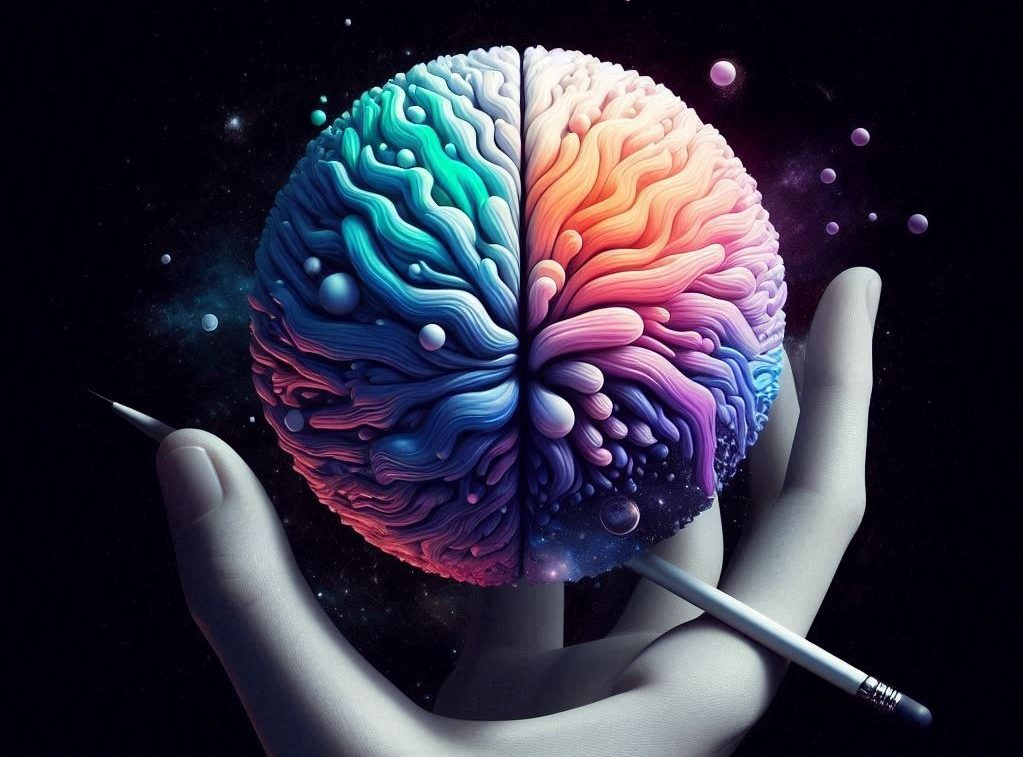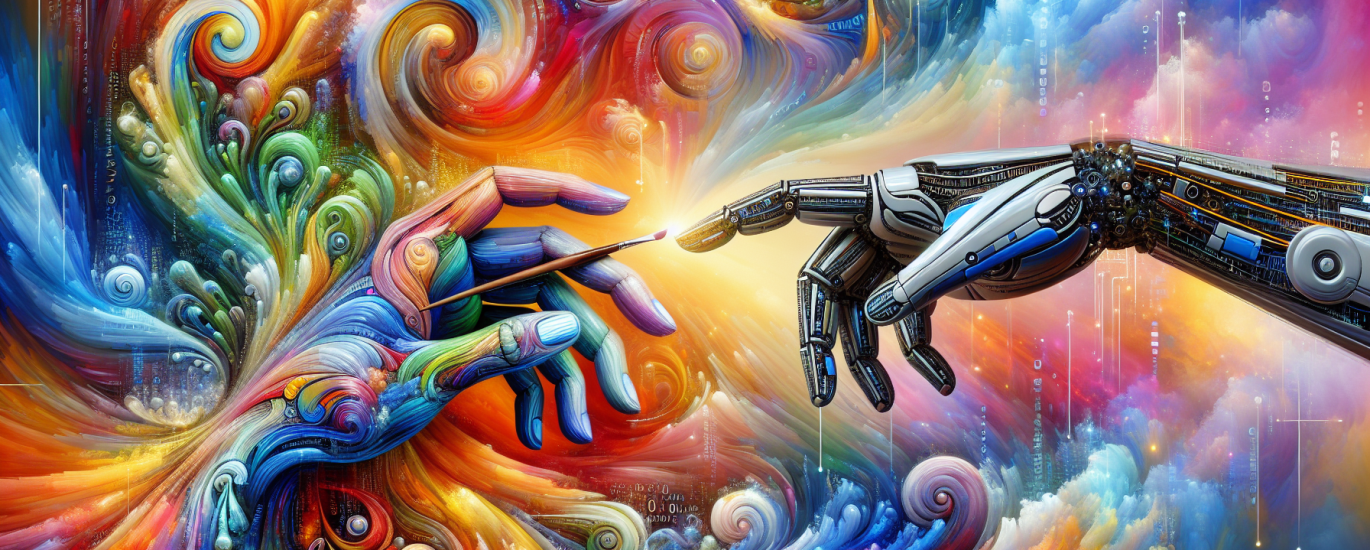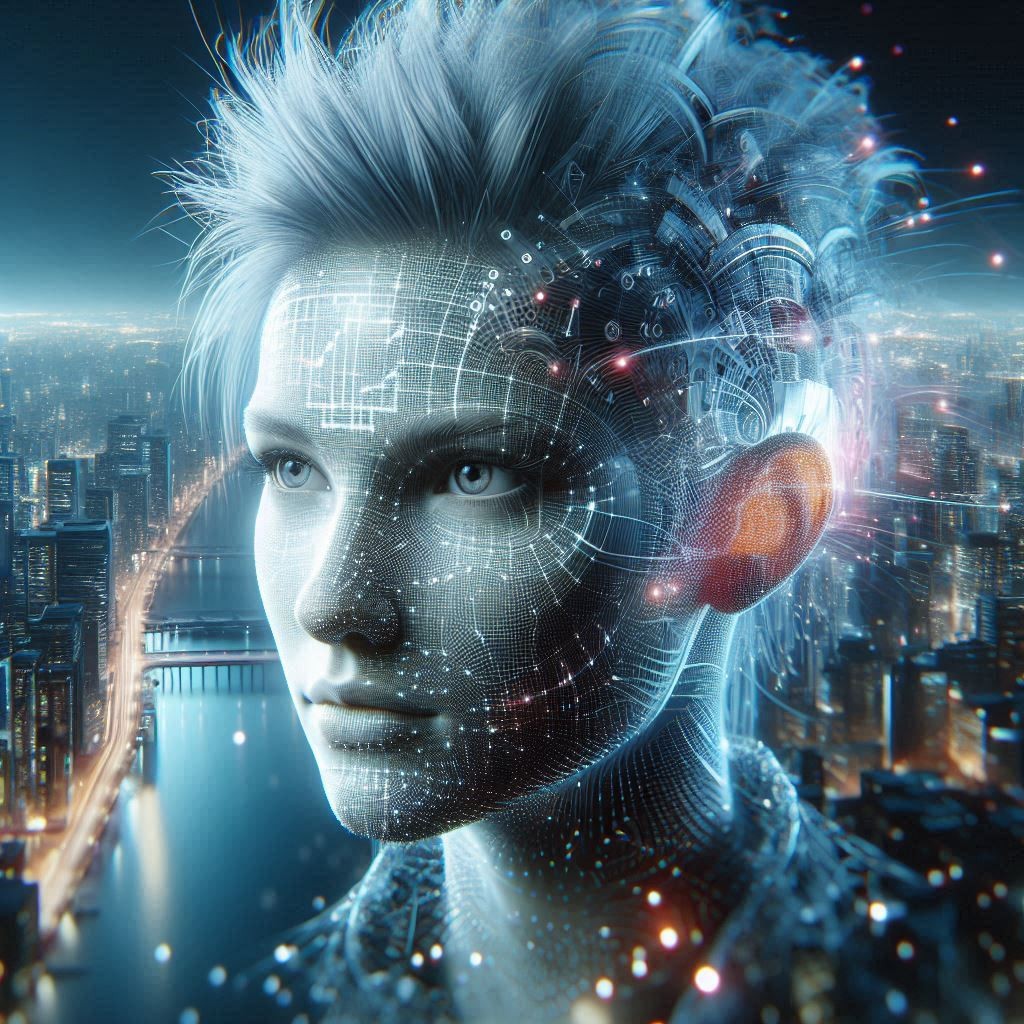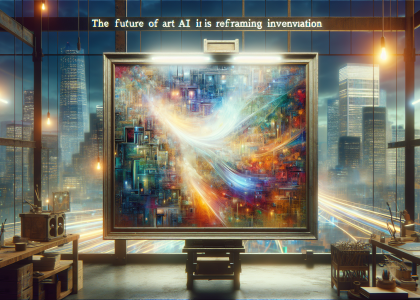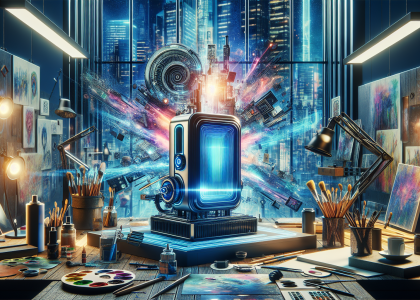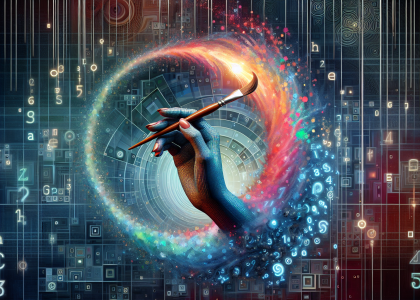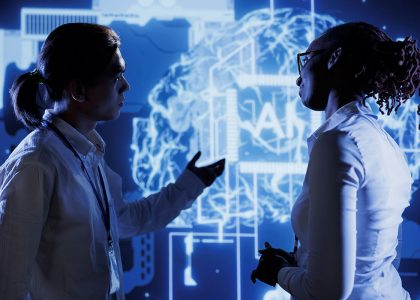The AI Revolution in Artistic Expression
In the ever-evolving landscape of creativity, a new force is reshaping the very fabric of artistic expression: Artificial Intelligence. As we stand on the precipice of a new era, AI is not just a tool but a collaborator, a muse, and sometimes even the artist itself. From the canvas to the concert hall, from the written word to the silver screen, AI is pushing the boundaries of what we thought possible in the realm of human creativity.
Brushstrokes of Binary: AI in Visual Arts
Let’s dive headfirst into the colorful world of visual arts, where AI is making splashes bigger than a Jackson Pollock painting! Remember when we thought only humans could wield a brush with intention? Well, hold onto your berets, because AI is proving to be quite the virtuoso.
Take, for instance, the groundbreaking work of the Obvious collective, who created the AI-generated portrait “Edmond de Belamy.” This pixelated gentleman, born from a Generative Adversarial Network (GAN), sold for a whopping $432,500 at Christie’s. It’s not just a painting; it’s a declaration that AI has arrived in the art world, and it’s here to stay!
But AI isn’t just creating; it’s also revolutionizing how we interact with art. Imagine walking through a museum where the paintings come to life, responding to your movements and emotions. That’s exactly what artists like Refik Anadol are doing, using AI to create immersive, data-driven installations that blur the lines between the physical and digital worlds.
And for all you Photoshop wizards out there, AI is taking image manipulation to mind-bending new levels. Tools like DALL-E 2 and Midjourney are turning text prompts into stunning visual creations, opening up new avenues for concept artists, illustrators, and even meme enthusiasts. It’s like having a genie in a digital bottle, granting your wildest visual wishes!
Algorithmic Symphonies: AI in Music
Now, let’s tune into the world of music, where AI is composing melodies that even Mozart might tap his foot to. Gone are the days when computers could only beep and boop; today’s AI can create entire symphonies, produce hit pop songs, and even improvise jazz solos that would make Miles Davis do a double-take.
One of the most fascinating developments in this arena is the work of companies like Amper Music and AIVA (Artificial Intelligence Virtual Artist). These AI composers can create original, royalty-free music for everything from YouTube videos to Hollywood blockbusters. It’s like having an entire orchestra at your fingertips, ready to score your life at a moment’s notice.
But it’s not just about creating new music; AI is also helping us understand and appreciate existing music in new ways. Machine learning algorithms are analyzing centuries of musical compositions, uncovering patterns and structures that human musicologists might have missed. It’s like having a super-powered music theorist who never sleeps and can listen to a million songs simultaneously!
And for all you bedroom producers out there, AI is your new best friend. Tools like iZotope’s Neutron use machine learning to help mix and master tracks, while Landr’s AI can master your latest banger with just a few clicks. It’s democratizing music production in ways we never thought possible, turning your laptop into a full-fledged recording studio.
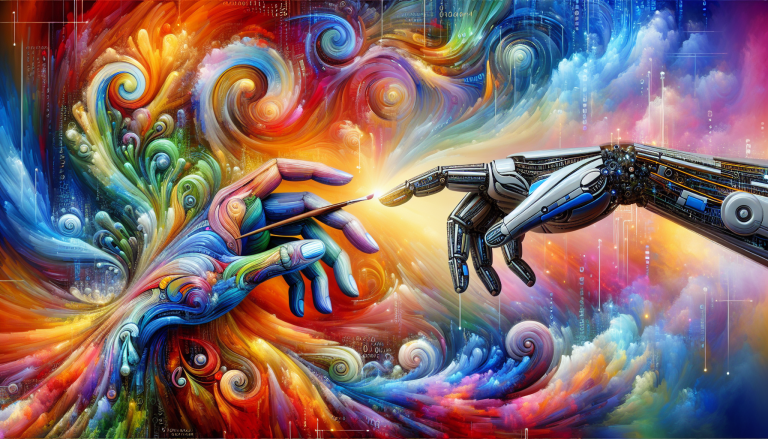
Digital Quills: AI in Literature and Writing
Now, let’s turn the page to the world of literature, where AI is writing new chapters in the story of storytelling. From poetry to prose, artificial intelligence is proving that it has a way with words that rivals even the most eloquent human authors.
One of the most intriguing developments in this field is GPT-3 (Generative Pre-trained Transformer 3), a language model that can generate human-like text with uncanny accuracy. It’s been used to write everything from short stories to entire books, blurring the lines between human and machine-generated content. Imagine having a co-author who never gets writer’s block and can work 24/7!
But AI isn’t just writing; it’s also helping us read and understand literature in new ways. Machine learning algorithms are analyzing vast corpora of texts, uncovering hidden themes, patterns, and connections that might take human scholars lifetimes to discover. It’s like having a super-powered literary critic who’s read every book ever written and can draw connections between them at lightning speed.
And for all you aspiring writers out there, AI is becoming an invaluable tool in the creative process. Programs like Grammarly use machine learning to help improve your writing, while more advanced tools can even suggest plot points or character development ideas. It’s like having a tireless writing coach who’s always ready with a fresh perspective.
The Ethical Palette: Navigating the AI Art World
Of course, with great power comes great responsibility, and the integration of AI into the arts raises some fascinating ethical questions. As we marvel at AI-generated masterpieces, we must also grapple with issues of authorship, originality, and the very nature of creativity itself.
Who owns the rights to an AI-generated artwork? If an AI writes a bestselling novel, who gets the royalties? These are just some of the thorny questions that artists, legal experts, and philosophers are wrestling with as we speak.
Moreover, there’s the question of authenticity. In a world where AI can create hyper-realistic images or write in the style of any author, how do we distinguish between human and machine-generated art? Will we reach a point where this distinction no longer matters?
And let’s not forget about the impact on human artists. While AI opens up exciting new possibilities, it also raises concerns about job displacement and the devaluation of human creativity. It’s a delicate balance between embracing technological advancement and preserving the uniquely human aspects of artistic expression.
The Canvas of Tomorrow: The Future of AI in Art
As we look to the horizon, the future of AI in the arts is as bright as a neon-soaked cyberpunk cityscape. We’re standing on the brink of a new Renaissance, where the boundaries between human and machine creativity are not just blurred, but completely reimagined.
Imagine virtual reality experiences where AI-generated worlds respond in real-time to your emotions, creating personalized artistic journeys. Picture collaborative performances where human musicians jam with AI improvisers, creating never-before-heard fusion genres. Envision interactive novels where AI adapts the story based on your choices, creating truly personalized narratives.
The possibilities are as limitless as our imagination, and that’s what makes this intersection of AI and art so exhilarating. It’s not about replacing human creativity, but augmenting it, challenging it, and pushing it to new heights.
As we conclude our journey through the AI-enhanced artistic landscape, one thing is clear: the fusion of artificial intelligence and human creativity is not just changing the way we create art; it’s changing the way we perceive, interact with, and understand art itself. It’s a brave new world of endless possibilities, where the only limit is our imagination.
So, whether you’re a traditional artist curious about new tools, a tech enthusiast eager to explore creative applications of AI, or simply someone who appreciates the beauty of human-machine collaboration, there’s never been a more exciting time to be alive. The canvas of the future is vast, and AI is providing us with a whole new palette of colors to paint with. Let’s create something beautiful together!

